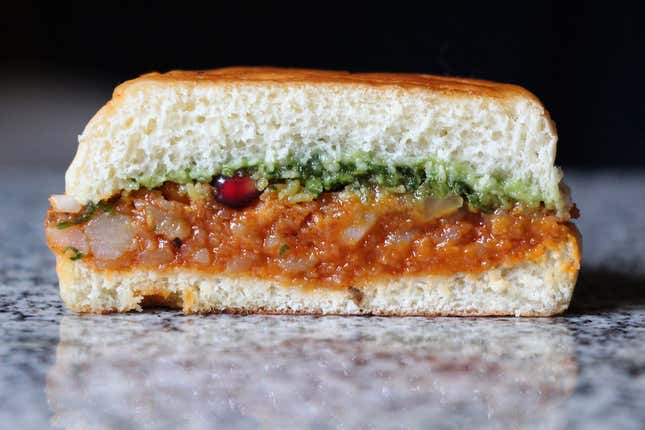Portability is the goal of most street foods. Some are served in a sack, and others are served on a stick, but ones that stick with you—in the sense of remembering, of course, but also in the sense of sticking to your ribs—are the ones wrapped in bread to make a sandwich.
The warm, soft embrace of a pillowy roll, or a crusty baguette, or even a simple slice of white bread not only gives a stationary snack its walking papers, but also adds a new, starchy element to a dish, changing its essence, often for the better. But what if the original dish is itself already loaded with carbs? Then, my friend, you have entered the wide world of carb-on-carb sandwiches.
These may be more common than you think. From the simple to the sublime, starchy sandwiches are gobbled down by people all over the world. Potatoes and pasta and pastry (oh my!), rice and corn, even bread itself is not immune to being slapped between slices of bread to make a sandwich. If comfort food is defined as nostalgic, unchallenging food high in both calories and carbohydrates, then a carb-on-carb sandwich is the ultimate in comfort food on the go.
I’ve picked 17 examples to share with you, though that is far from the full extent. I’m not going to list every type of sandwich that might get a handful of shoestring potatoes thrown into it, nor every burrito or kebab wrap that features French fries. For the most part, these 17 sandwiches are centered around a carby component as the main ingredient, or at least as a signature flourish. Share your favorites with us in the comments, and let us know about any varieties you might have invented yourself.
















